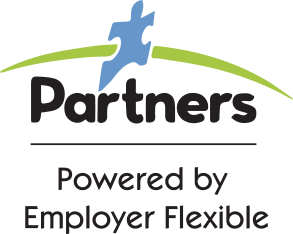“Screening In” Gains Ground vs. “Screening Out” in Tight Labor Market
“Screening In” Gains Ground vs. “Screening Out” in Tight Labor Market

Much of the HR playbook has been rewritten, if not completely run through the shredder, since the COVID-19 pandemic started, and talent acquisition is certainly no exception.
Hiring experts at the Society for Human Resource Management’s (SHRM) recent Talent Conference & Expo 2022 highlighted a shift in HR tactics during a historically tight labor market.
“The experts on the panel agreed that the typical recruitment practice of screening out—or eliminating candidates because they don't meet all criteria—is not workable in the present environment,” wrote SHRM’s Roy Maurer. “Instead, talent acquisition teams should practice more “screening in” or hiring for competencies and training on the particular role.”
Companies are taking a hard look at their recruitment funnel in an economy where 11.3 million jobs went unfulfilled in May.
"Employers have developed some bad recruiting habits over the recent recessions, where we added more tests and assessments to try and select the best and filter down the funnel," Kristen DesPalmes, director of talent attraction strategy and innovation at BAYADA Home Health Care in Denver told SHRM. "Things are different now, but those extra steps are still there. I think we tend to over-select. We should hire people who are competent and then train them in our particular way."
Nearly 2 Vacancies for Every Unemployed Worker in U.S.
The labor market is considered “tight” if there are more vacancies than available workers and “loose” if the opposite is true.
The government monitors the labor market conditions with its Job Openings and Labor Turnover Survey (JOLTS), which provides a measure of vacancies (V).
Dividing by the number of unemployed workers (U) provides a ratio (V/U) for the labor market.
“In the U.S., the V/U ratio was over 1.8 in the last quarter of 2021, which meant that there were nearly two vacancies for every unemployed worker. This was higher than its pre-pandemic level and higher than the recent historical norm of about 0.7 since 2000,” says the St. Louis Fed.
Recent numbers have not budged much with the BLS’s May JOLTS report showing 11.3 million positions open, and approximately 6 million unemployed workers.
“The high number of people not returning to the workforce is one of the nagging problems with the labor market right now," Jeffrey Roach, chief economist at LPL Financial, told The Street. "Relative to pre-pandemic levels, the economy has 4.8 million more people out of the labor force. Some likely took early retirements but that does not explain the rest of the story. The labor market will remain tight with low unemployment as roughly 5 million people have not yet rejoined the workforce."
Employers Changing the Way They Hire Workers
The response for many employers is to change the way they vet job applicants in this historically tight labor market.
“Some have reduced or eliminated requirements for pre-employment screening with the goal of speeding up the hiring process and tapping a wider talent pool. Others have made changes in their screening procedures to comply with new state laws and regulations,” writes Mike Ramsey in HR Magazine’s summer 2022 edition.
Ramsey points out that this loosening of job requirements may have started prior to the pandemic with a 2019 survey showing that 37 percent of employers were already lessening some requirements such as education levels achieved and previous work experience in response to a tightening labor market.
John Gulnac, vice president of search for Adecco told Ramsey that employers are asking themselves, “How do we get them through our interviewing process so we can make a quality hire that we feel really good about? But also, how can we do it quickly, so we don’t lose them to somebody else?”
While some background hurdles such as college GPA and references might be loosening, many companies are still requiring criminal and judicial background checks for possible hires. A 2018 National Association of Professional Background Screeners survey found 95 percent of companies conducting background checks, citing:
- Protecting employees and customers (86 percent)
- Improving the quality of hires (52 percent)
- Law/regulation requirements (39 percent)
- Protecting company reputation (38 percent)
- Prevent and/or reduce theft, embezzlement, and other criminal activity 36 percent)
Understanding “Screening In” vs. “Screening Out”
Employers must screen employees to fill open positions, but there are different ways of thinking about this screening process.
“When we talk about screening, however, we’re usually talking about screening out. There’s a significant difference between screening in vs screening out applicants and shifting from one approach to the other can help improve diversity hiring, lower recruiting costs, and even improve key metrics like time-to-fill and time to hire,” writes Emily Heaslip for Vervoe, a company that provides automated AI-powered screening tools.
Talent Retriever, a recruiting firm with offices in Boston and New York, defines “screening in” vs. “screening out” as:
- Screening out is finding every reason not to hire someone versus looking at all the things someone could bring to the table and would make them a great addition to the team.
- Screening in aims to include candidates who may not have all the desired skills you’re looking for, but recognizing the value that the candidate might bring, and how they can impact a team.
“There is also the need to screen out when it comes to travel and commute. If traveling is a key part of the position, and the candidate is not willing to travel, that will automatically remove them from the possibilities of the position,” says Talent Retriever.
Screening in requires companies to look at the potential a worker can bring to a position and the company. If candidates are “screened out” because they do not fit specific criteria, the employer could lose out on hiring a valuable asset.
“Screening in is a more inclusive approach to hiring that considers candidates who may bring experience, enthusiasm, and energy to a team — despite not fitting all the criteria a recruiter had imagined when designing the job description,” writes Heaslip. “The screening in process allows candidates to show their skills or to relay more information about them, providing context to their application that’s often erased in a two-dimensional resume or cover letter.”
Pros and Cons of “Screening In” Job Candidates
So how can your company “screen in” job candidates?
“Recruiters should look for candidates that show a promising growth trajectory,” Michelle Armer, chief people officer at CareerBuilder told HR Dive.
Heaslip argues that screening in requires using a skill assessment, screening interview, or some other form of pre-employment testing to ascertain whether a candidate is truly qualified.
The pros of screening in include:
- Companies have more opportunity to find “hidden gems” that they might have previously screened out due to their background, education, experience, or other credentials.
- Companies can help meet diversity hiring goals by adding employees with non-traditional resumes.
The cons of screening include:
- Companies may end up with a much longer list of possible candidates when not screening out.
- More time and resources may need to be dedicated to the hiring process.
We at Partners HR will closely monitor the labor market and we'll provide updates on these as able. In the meantime, please visit Partners HR for more information on how PEOs can help small businesses hire, train and retain employees.



